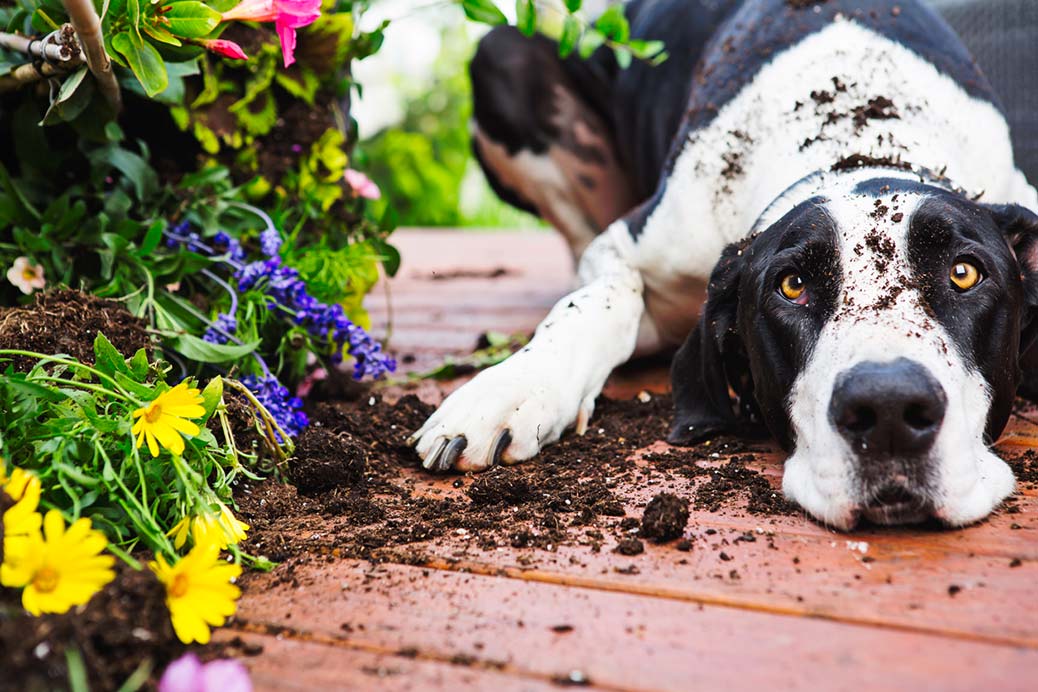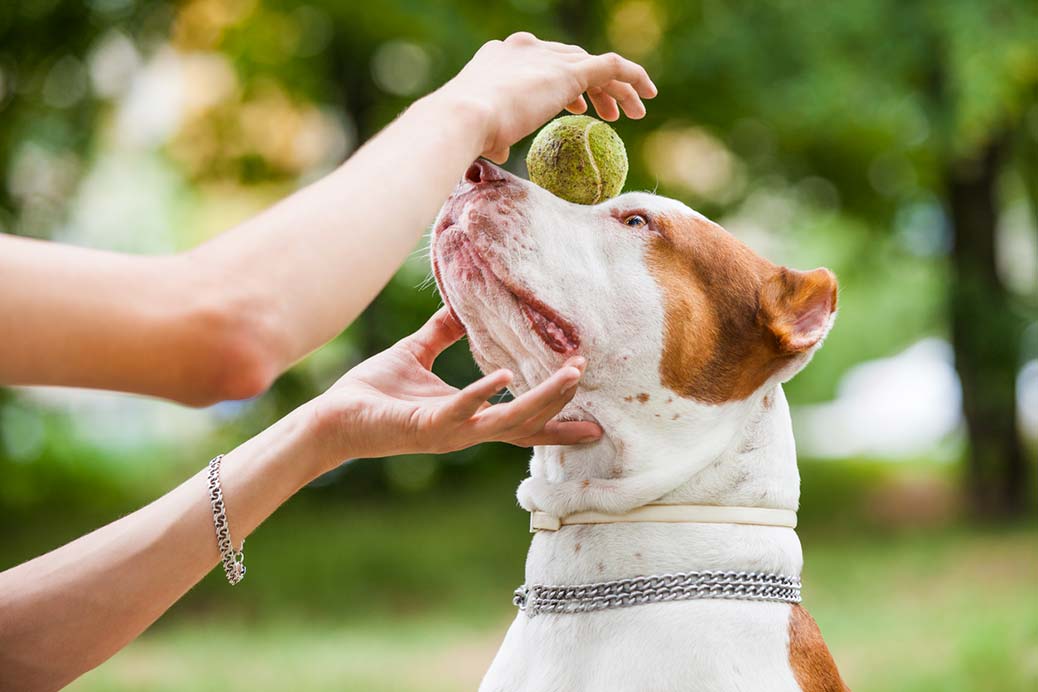In Part 1, we met Bella, the Golden Retriever who’d been adopted from an animal hoarding home and was exhibiting fearful behavior, unable to enjoy many of the situations associated with living in a home with new people. I introduced readers to my Five P’s – five areas of intervention I recommend to owners working to address the fearful behavior of dogs who lack prior socialization. I’ll go through each of these now, elaborating on how they work and how they were used in the case of Bella.
1) Provide a stable environment. Like humans, many animals thrive in environments in which they can predict events happening around them. In nature, animals must learn where food sources are, when food is available, and when danger is near. The more consistent and predictable the environment is, the better animals can obtain basic needs and avoid danger successfully. Dogs too, especially those who are fearful and undersocialized, benefit greatly when their world is fairly predictable and when they are treated consistently over time.
In Bella’s case, I instructed her owners to keep mealtimes and training times fairly consistent. I taught them to use consistent verbal cues such as “Hi Bella!” to announce their approach and their intentions to interact with Bella. Bella learned to respond to these cues positively, wagging her tail and peeking across the room when she heard family members call her name and talk to her. I also instructed owners to keep visitors to a minimum at first and to avoid major changes to routines when possible, so that Bella could adjust to the basic rhythms of her new household.
2) Pinpoint goals for gradual socialization. To bring a dog from a chronically fearful state to one that allows her to play freely, explore her world confidently, and meet new situations with ease requires many steps. Often, we push dogs too quickly into situations for which they are not quite ready and this risks making the fear and anxiety worse. Instead, we must utilize systematic desensitization.
To do this with Bella, we created a list of situations the owners hoped she would learn to tolerate well. These included going for walks on leash, allowing everyone in the family to pet her without shying away, and moving comfortably into the back yard for toileting. We then broke each of these tasks into components and created a hierarchy from least to most fear-producing. For example, with the goal of going for a walk, we had to a) introduce a leash and harness, b) teach her to tolerate pressure from the leash without balking, c) teach her to walk on leash in the house and yard, and d) teach her to walk in the neighborhood amid a gradually increasing number of stimuli (people, vehicles, etc.) Each of these components required its own training, and Bella’s progress across components depended on her ability to exhibit relaxed behavior at each prior step.
3) Positively reinforce calm or confident behavior. To produce relaxed behavior in a fearful dog, we must use positive reinforcement to reward specific responses. Dogs respond to different rewards, and for many fearful dogs a food reward is more effective than praise or toy play at first. Specifically, because many of these dogs are too inhibited to play freely and may not be used to different styles of contact from people, food rewards such as bits of chicken breast can produce the most rapid improvement in behavior. Over time, the verbal praise and affection from owners become increasingly rewarding as well and these can soon be incorporated into a program designed to reward confident, calm, or curious behavior.
In the case of Bella, we worked first to reward her whenever she looked at her owners (rather than looking away fearfully) and then whenever she left her dog bed. Owners paired a soft “Good girl!” cue with delivery of a tiny piece of lunch meat. When we saw she was happily gulping down any bite offered, owners began to keep an eye on her as they moved through the house and to say “Good girl!” and toss her an edible reward whenever they saw her looking up at them and later, when they saw her stand or move off of her dog bed. Over time, Bella began to follow her new owners, first with her eyes and then with her body, until she was easily moving through the home and gazing softly into her owners’ faces without fear.
4) Pursue pharmacological intervention as appropriate. There are several classes of pharmaceuticals that can be used to reduce fearful and anxious behavior in dogs when used in combination with a behavior modification plan and environmental supports. Typically, the goal is to use the medication to allow the animal to respond most efficiently and fully to behavior therapy and then to reduce or remove reliance on medication over time and as long as behavioral gains are sustained.
Many dogs like Bella respond well to serotonin-enhancing medications and these drugs have received much positive attention among veterinary behaviorists in recent years.
5) Practice patience, patience, patience! Behavior in all its varieties takes time to change. This is rarely more obvious than in the cases of dogs who were not socialized appropriately as pups. These dogs can take months, and even years, to come out of their shells and exhibit the full range of normal canine social behavior. Moreover, time alone will not do the trick in many cases. Instead, that time must be structured with gradual exposure, consistent communication, and plenty of positive reinforcement for sometimes very small steps. All of this can be understandably trying for even the most devoted of dog owners.
In the case of Bella, it was 4 weeks before she ate in the kitchen on her own, 6 weeks before she moved freely into the back yard, 12 weeks before she reliably came when called from anywhere in the house, and over 9 months before the owners reported they could walk her comfortably through the neighborhood without her startling at passing vehicles or shying away from approaching strangers. Bella was lucky because her owners were patient, persistent, and sought the professional help that they needed. And Bella’s owners were lucky in turn, because they ended up with many happy years with a wonderful canine companion.






Comments are closed.
I have a question about how you taught Bella to walk on a leash. I have a client with a fearful dog, he has the dog on a regular harness, but when his dog pulls on the harness, he can escape pressure by turning to the sides. This seems counter-productive when you are trying to teach a dog to respond to pressure on the leash. What type of harness/collar do you recommend for this type of situation. I am afraid a Gentle Leader might scare a dog like this more. Just looking for suggestions.
Hi Andrea,
In Bella’s case, I had the owner work with a regular body harness at first, and a head halter later. I have worked with many fearful dogs who I thought might respond with fear to the Gentle Leader and yet the head halter tends to have a calming effect for most. Perhaps this is through the increased physical control provided to the handler by the head halter, combined with a systematic introduction using high-value reinforcers to strengthen calm tolerance. For any body or head harness, what becomes key is that ability to reinforce small steps toward tolerance of pressure and forward movement with the owner.
Sincerely,
Dr. Maxwell